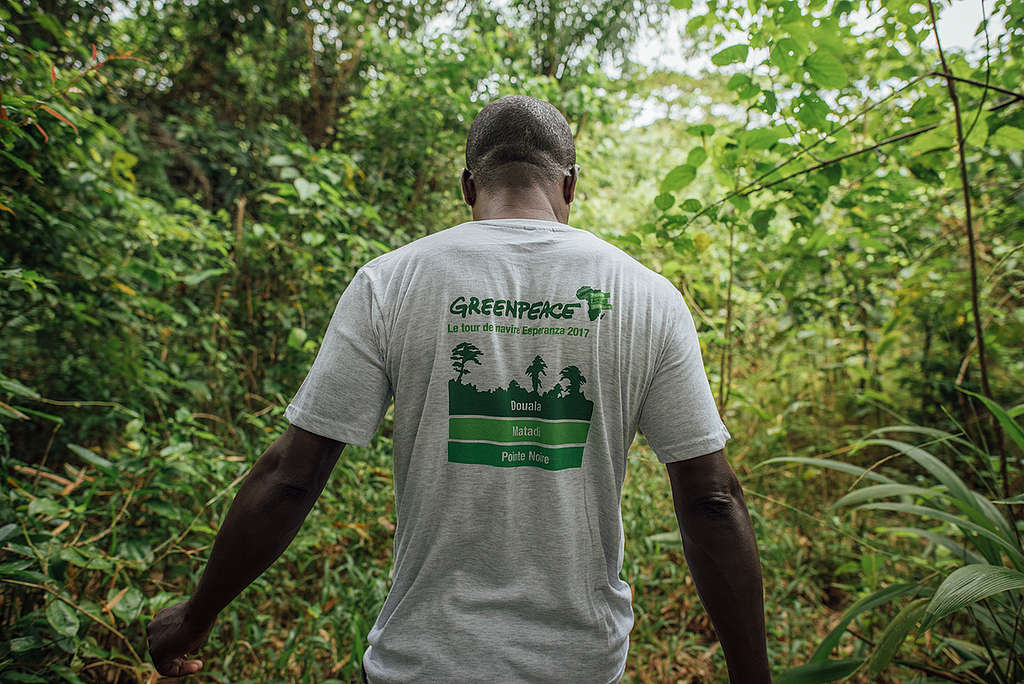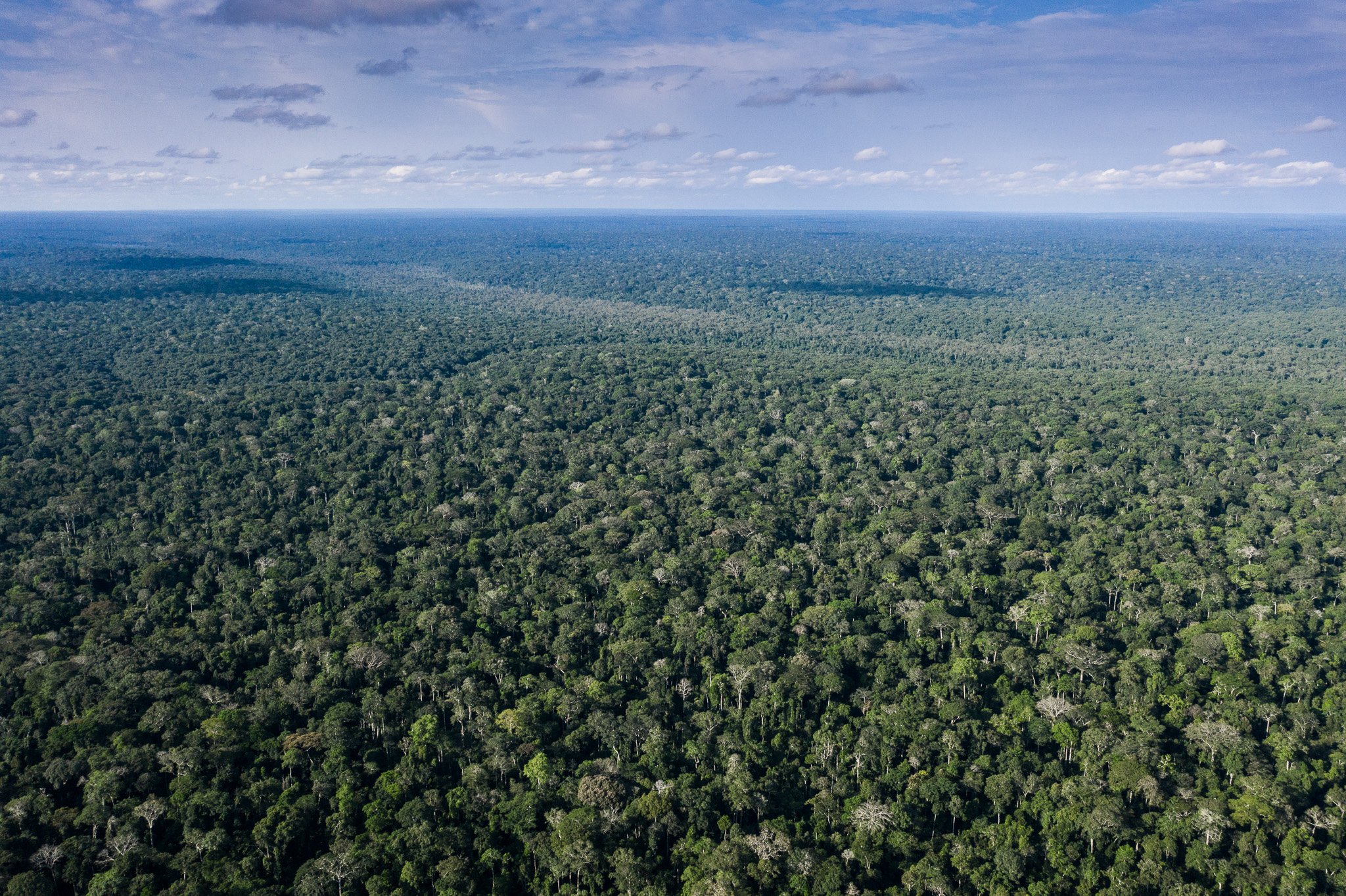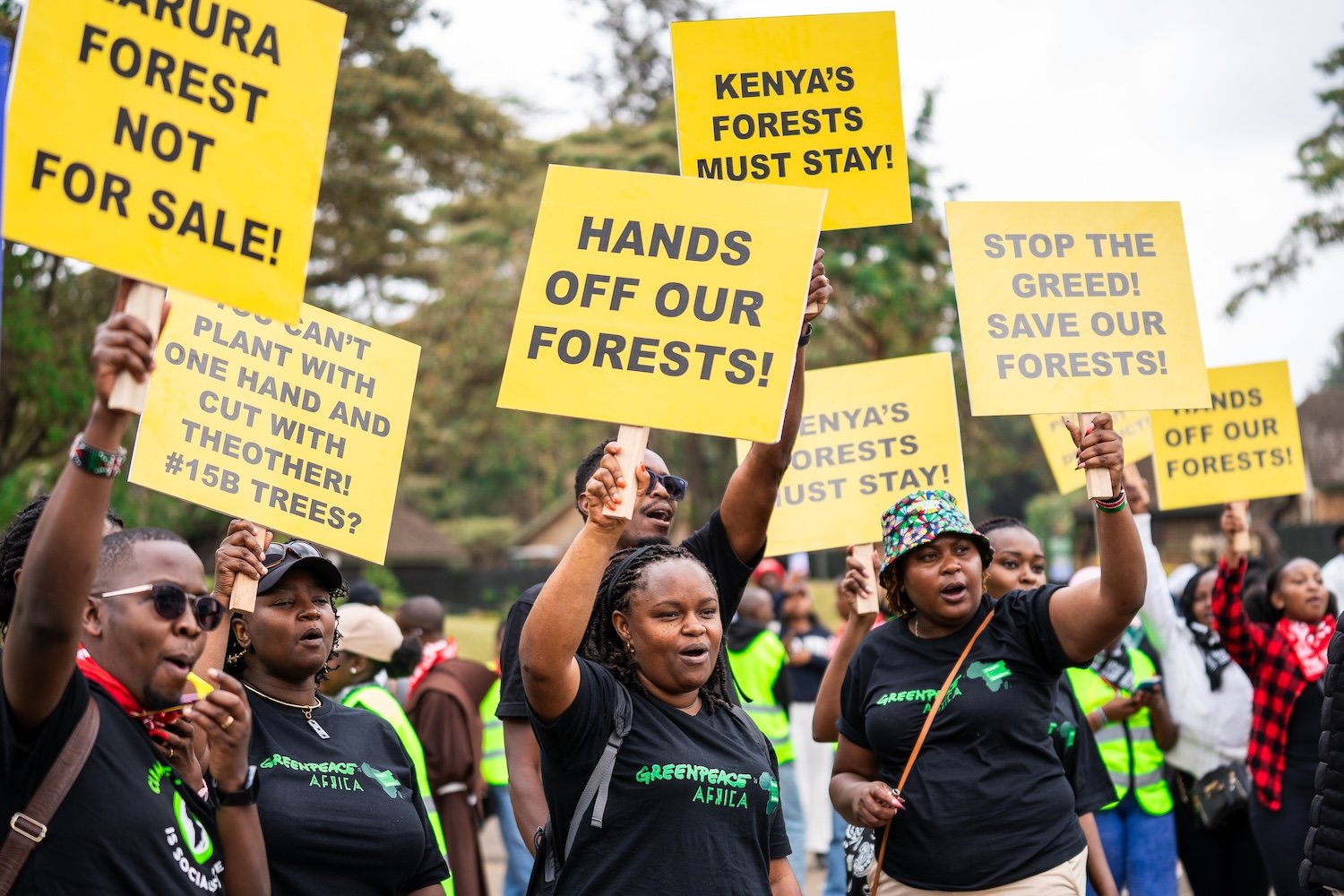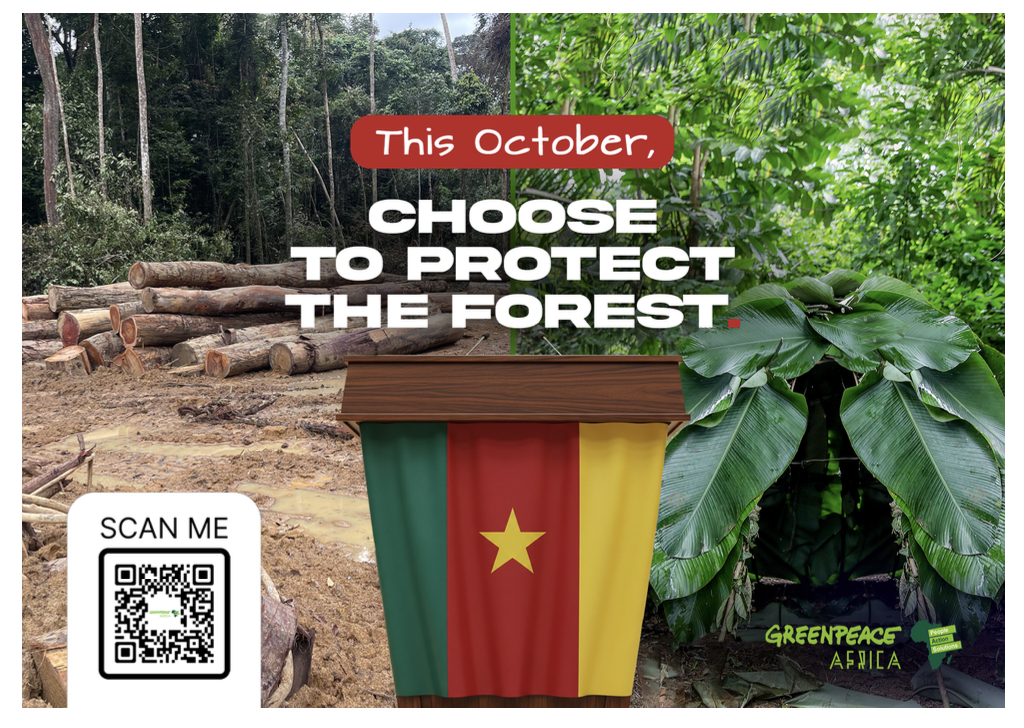Kinshasa, 27 August 2019. Since August 21, more than 6,902 fires in Angola and 3,395 fires in neighbouring Democratic Republic of Congo have been documented, predominantly in the savanna area. Like the Amazon, the Congo Basin rainforest is facing a risk of being hit again by uncontrolled fires [1]. Greenpeace Africa calls on the Congo Basin governments to take immediate measures to prevent fires from hitting the rainforest. For the long-term, governments must end all industrial activity within the world’s second largest rainforest.
“We must learn from the ongoing fire crisis in the Amazon and take the necessary steps to ensure the flames are controlled and do not spread further in the Congo Basin forest”, said Irène Wabiwa Betoko, Greenpeace Africa Senior Forest Manager.
The Congo Basin forest is home to about a million of indigenous people who are its first guardians, as well as thousands of species who depend on it. It also serves as a carbon sink and plays a vital role in regulating the global climate.
“Climate change and industrial activity in the forest make it more vulnerable to fires. Without forest protection, we will not be able to face the climate crisis”, warned Wabiwa Betoko. “Forest management rights should be given to indigenous peoples in line with traditional knowledge and environmental standards instead of giving concessions to destructive multinational corporations”, Wabiwa Betoko concluded.
Notes:
[1] In 2016, one of the largest forest fires ever witnessed in the Congo Basin forest occurred in the Republic of Congo logging concession of the German-owned Danzer Group – certified “sustainably managed” by the Forest Stewardship Council.
Contact for interviews and more information:
Irène Wabiwa Betoko, Greenpeace Africa Senior Forest Manager, [email protected], +243976756102
Tal Harris, Greenpeace Africa International Communications Coordinator, [email protected], +221 776730496





Discussion
Thank you for the objective article. just few questions. 1. are there still active fires in the above-said areas? if yes, is your team dong something?
Yes the fires are still active. Every year Greenpeace monitors and reports the fires in the Amazon region, alerting about the risks and consequences. Greenpeace has been investigating, researching, documenting, reporting and monitoring forest destruction for 27 years. We are an independent and non-partisan organization, so we press any government to protect the Amazon. In 2019, we have been monitoring and denouncing deforestation and fires in Rondônia, in the Karipunas Indigenous Land. In October 2018 we flew over to document and show the damage left by the fires between the states of Amazonas, Acre and Rondônia. During the overflight, we identified active outbreaks especially around and within protected areas such as Indigenous lands and conservation units, which pose a great risk to their preservation. In 2017, during the investigations for the production of the report “Hold the Line”, we recorded fires in the Cerrado region caused by increased land-grabbing of the agribusiness over the states of Maranhão, Tocantins, Piauí and Bahia, region known as MATOPIBA. In August 2016, Greenpeace conducted a surveillance flight over the states of Amazonas, Rondônia, Acre, Mato Grosso and Pará to document the situation. In 2015 we recorded the fires that devastated the indigenous lands in Maranhão affecting the lives of indigenous people, especially the Araribóia Indigenous Land, which saw one of the largest fires ever recorded inside indigenous lands in Brazil. We showed the state's lack of action and warned that the degradation caused by loggers makes the forest more vulnerable to fires. Indigenous leader Sonia Guajajara accompanied us on an overflight to document the damage caused by the fires.